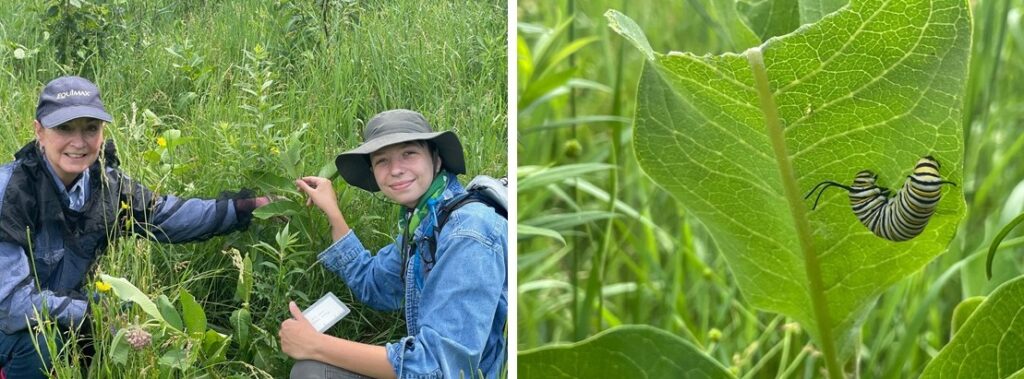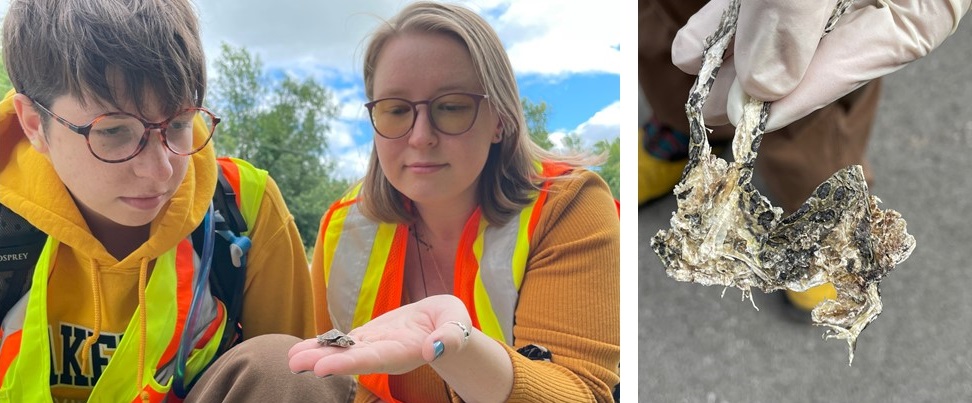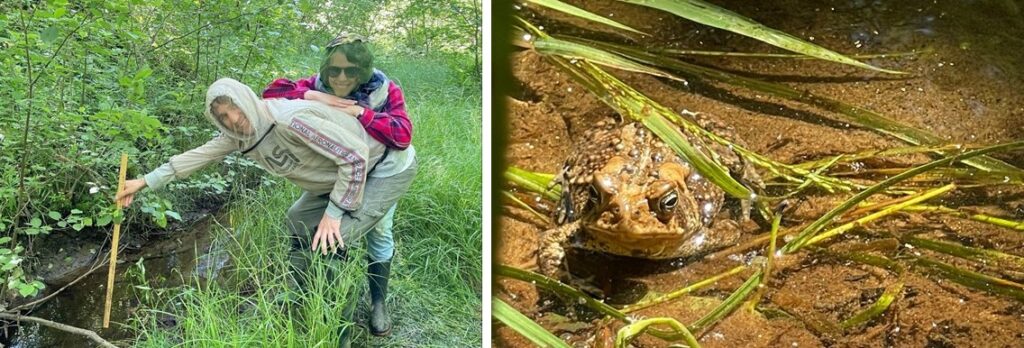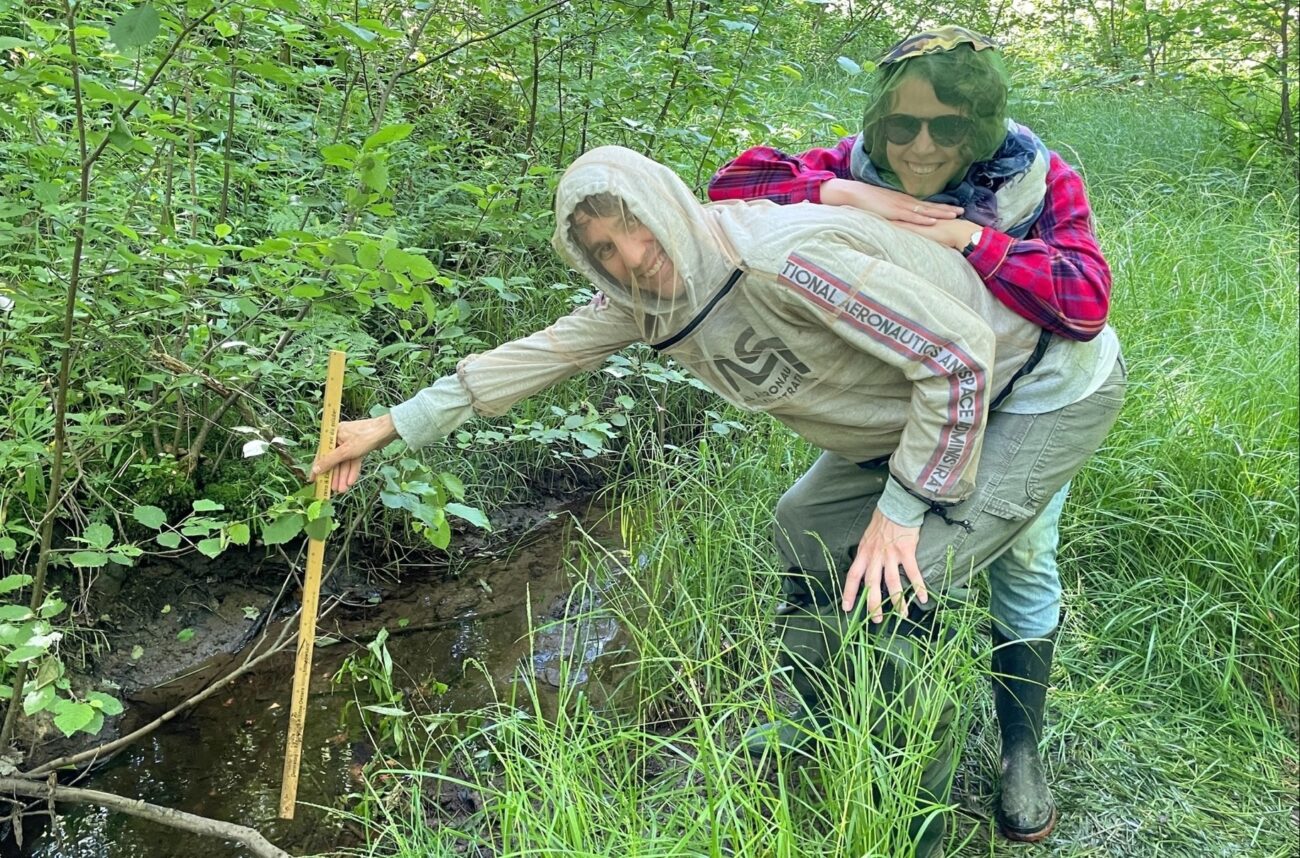Check in throughout the season to see what volunteers and staff have been up to! You never know who, or what, we’ll cross paths with…

Left: Volunteer Susan Crowe and Summer Field Technician Alysha Henry. Right: A Monarch caterpillar feeding on a Milkweed plant. Photos: Aiesha Aggarwal
In summer we take to the meadows where Monarch caterpillars hunt for their only source of food: The Milkweed plant.
The caterpillars will eventually cocoon and emerge as butterflies, migrate south for winter and mate, fly north again, and lay their eggs which hatch as baby caterpillars to begin their four-stage life cycle all over again.
Now in it’s second year, our Monarch monitoring program aims to document the abundance of this Species of Special Concern on our nature reserves.

Left: Summer Field Technician Alysha Henry and volunteer Victoria Phillips with a baby Painted Turtle who didn’t make it across the road. Right: A dessicated Northern Leopard Frog. Photos: Aiesha Aggarwal

Left: Meagan Edwards & Thomas Kaethler Right: The grumpy Toad. Photos: Aiesha Aggarwal

Left: Melanie & Alan Tuck have been patiently waiting for our water supplies to come in so they could take this training. Right: Kevin Burnett & Kate Crawford are a new team who will be monitoring at Scout Valley. Photos: Aiesha Aggarwal

Left: Amina Mohammed & Meaghan Coughlin at Prospect Marsh. Centre: Ryan & Cassy Lamoureux at Ling Easement. Right: Aiesha Aggarwal, Courtney Thompson & Lorelie Cornish at Carthew Bay.
Frog call monitoring is a going concern from late March to early July, and the program has grown to 50 volunteers since we began the program in 2017.
Volunteers are trained to identify the 9 species of frogs and one toad found in our region by their mating call. They then rate the abundance of each species at their site using a calling code system developed by Birds Canada for their Marsh Monitoring program.
Over the years, this gives us the ability to identify the types of frogs we have at each nature reserve and monitor their population levels for signs of increase or decline.
The season has now wrapped up for another year.
See more frog monitoring teams and other photos from our adventures in the field here

